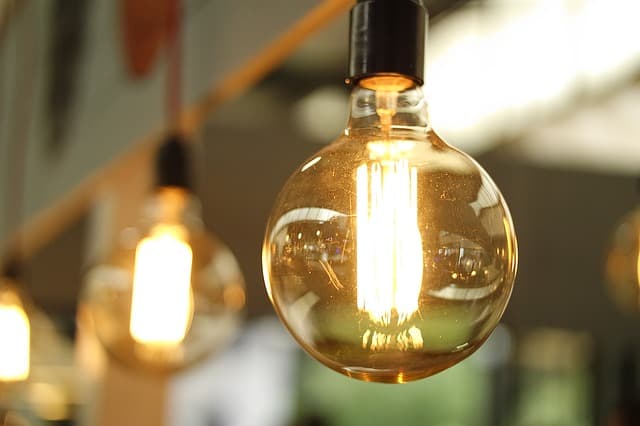10 Easy and Simple Additions to Make Your Home “SMART”

It’s becoming easier and easier for people to start automating their homes with technology. Since there’s not a shortage of companies and start up ventures rolling out products like automated lights, thermostats, and air conditioners, turning a home ‘SMART’ can be a relatively simple process.
Keep reading for 10 easy things you can do to transform a house into something smarter.
Slash your lighting costs with smart light bulbs
While they’re a bit on the expensive side – about $15 per bulb – smart bulbs are also some of the longest-lived light bulbs on the market. Plus, they use about 80 percent less power than traditional light bulbs, so you stand to save big by spending a bit extra on them. With the smart bulbs installed, you can use an app to control the amount of light each produces and schedule certain bulbs to turn off or on at certain times. Check the bulbs before you buy them, since some require a “bridge” to connect to your wi-fi router.
Manage your home’s temperature with smart thermostats
A smart thermostat can be programmed in advance to ensure your home’s temperature is ideal at all times. If it isn’t, you can adjust it from a distance via an app. Since heating and cooling account for 25 percent of all home energy consumption, you could see significant energy savings by installing a smart thermostat.
Improve your privacy using smart shades
In addition to linking your central heating and cooling systems to a smart hub, replacing your regular shades or curtains with smart shades can help you better manage your home’s temperature and energy use. You could, for instance, program your smart shades to open on east-facing windows in the morning, allowing you to wake up to the sun’s warming rays. Some smart shades can also be programmed to close or open when you’re in a particular room, or shutter when you go to bed.
Reduce energy leaks with smart power strips
Smart power strips allow you to control whatever is plugged into the strip. If you’re worried you left the coffee maker on, for instance, just bring up the strip’s data in the bundled app and find out whether it’s in use, then switch the strip on or off according to your preference. Smart power strips can also reduce your phantom energy leaks – the energy your appliances consume even when they aren’t in use. For added energy efficiency, some strips are programmable, allowing you to turn them off automatically at certain times or after they’ve transmitted a certain amount of energy each day.
Keep things secure with a smart security camera
Smart security systems can give peace of mind to homeowners because they can broadcast live video of the property and let users lock and unlock doors from far away. The Moon camera from startup company 1-Ring is able to levitate and be controlled by an app. It can even turn on its own to follow and record noise once it senses sound. The Manything program lets homeowners turn old phones into security cameras that can send alerts about any visual activity or movement.
Use smart door locks to protect a house
Upgrade the traditional deadbolt to a smart lock and get a notification anytime the door opens after installing the Lockitron. Smart locks can be calibrated to only let certain people into a house, which can be useful for a homeowner who wants to run errands when a friend needs to come by to pick something up. Safety is assured since smart locks like the one from August are hard to tamper with or manipulate.
Cut down on water waste with smart water technologies
New showerheads and faucets can help you get the most out of your water use. Smart showerheads shape the individual droplets of water to ensure that you get squeaky clean while using as little water as possible (though the best way to save water in the shower is still to just keep your showers short). Smart faucets do the same thing, and many allow you to adjust the water to your ideal temperature before turning it on. Together, these technologies could reduce your water usage by up to 75 percent.
A related technology, the smart sprinkler system, uses weather data to determine whether your garden or lawn needs to be watered, and turns itself on or off automatically based on your preferences.
Go solar for green energy
Adding solar panels to a home can be a very smart investment since the federal government offers tax credits that could total 30% of the cost of a solar energy system. Lots of states have incentives for homeowners to adopt solar power as well. There’s a lot of different types of panels on the market of all shapes and sizes. Manufactures are also rolling out all-black panels that look much sleeker and cohesive on a house in comparison to earlier grey and blue cell models.
Use air monitors to monitor quality
Smoke and dangerous gases like carbon monoxide can quickly turn deadly if they are not noticed. Since carbon monoxide is colorless and odorless, it can be impossible to detect without a monitor. The Nest Protect monitor sends alerts straight to a phone if it detects any dangerous gases and can be set to partially shut off while someone is cooking. Homeowners can use the Awair Air Quality Monitor to keep close tabs on the types of allergens and pollutants floating around a house. The device even gives advice based on what it senses to improve air quality.
Save energy with smart kitchen appliances
There are a wide variety of smart kitchen appliances that enable you to save energy and take greater control of your home. Smart stovetops can be programmed to heat your pans until they boil, then reduce the heat to an ideal temperature that won’t lead to any wasted energy. Other smart kitchen appliances like coffee makers, crock pots, and other devices can be scheduled to turn on or off when you want, allowing you to wake up to fresh cup of joe or come home to a ready-to-eat meal.
All of the above technology is widely available and can be found at a lot of different price points. Turning a home smart does not have to be a time intensive or overly expensive affair. Rather, adding features to a home to make it smart can make lives easier and result in a higher asking price once it comes time to sell the home. Above all, they help us reduce our carbon footprint and contribute to a better world.






